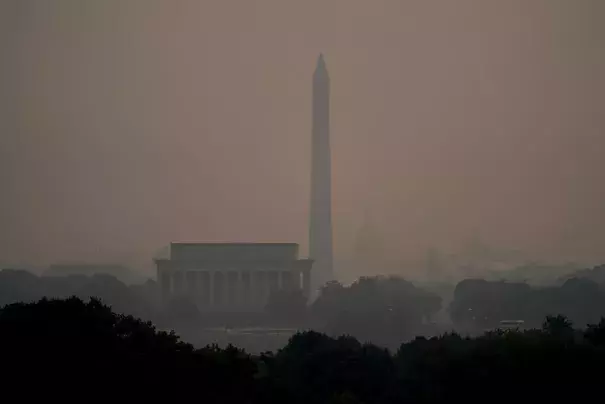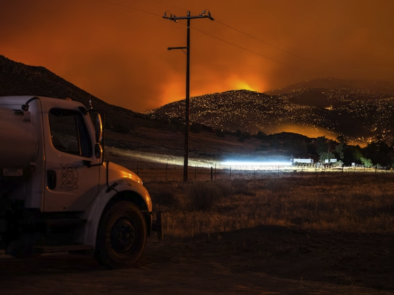Toxic Wildfire Smoke Choking East Cost Not Even Counted In Climate Costs Models

Hundreds of Canadian wildfires blanked wide swaths of the eastern U.S. with hazardous wildfire smoke, sending people to emergency rooms, forcing millions to stay indoors, and bringing everything from school schedules to professional sports, to airline flights to a halt. Climate change is increasing the size, frequency, and intensity of wildfires as well as the length of the fire season and multiple studies have found the fingerprint of global warming in Canadian wildfire activity. Fine particulate matter (known as PM2.5) pollution can exacerbate asthma, and cause everything from short-term respiratory problems up to heart attacks, stroke, lung cancer, and reduced cognitive function — it can even harm fetuses in the womb. The pollution carried by the sun- and skyline-blocking wildfire smoke is even "more toxic than other sources of PM2.5" because wildfires burn everything in their path, Harvard professor Francesca Dominici told the Washington Post. “The evidence says that [federal PM2.5 standards] should be as low as possible," she added. "There is not a ‘safe’ level,” she added. Black, Asian, Hispanic, Latino, and low-income communities are more heavily burdened than whiter and more affluent groups, in significant part because of racist policy decisions including the siting of highways and polluting industries in formerly redlined communities. In events like the current wildfire smoke inundation, lower-income people and front-line workers are also less likely to be able to leave the region, work from home, and afford expensive air filtration equipment. While the overwhelming wildfire smoke represents the present impacts of climate change — and despite the fact that American workers lose about $125 per year due to wildfire smoke — the substantial economic costs are not even likely to be officially counted as consequences of the continued use of fossil fuels. "None of the existing monetized economic costs of climate change — like when we come up with the social cost of carbon or any of that stuff — wildfires are not in there at all," Stanford professor Marshall Burke told Heatmap.
(East Coast smoke: Wall Street Journal $, Washington Post $, AP, The Guardian, Washington Post $, Axios, NPR, Axios, AP, Wall Street Journal $, Axios, Washington Post $, ABC, Politico, Le Monde; Health risks: Washington Post $, Reuters explainer, Washington Post $, Axios, WBUR; Inequitable impacts: Washington Post $; Workers: CBS; Uncounted costs: Heatmap $; Sports: AP, Weather Channel, CBS Sports, USA Today; Canadian Fires: New York Times $, Reuters); Climate connections: The Guardian, ABC, Yale Climate Connections, Wall Street Journal $, New York Times $)
(Climate Signals background: Wildfires)
To receive climate stories like this in your inbox daily click here to sign up for the Hot News Newsletter from Climate Nexus:
Related Content






